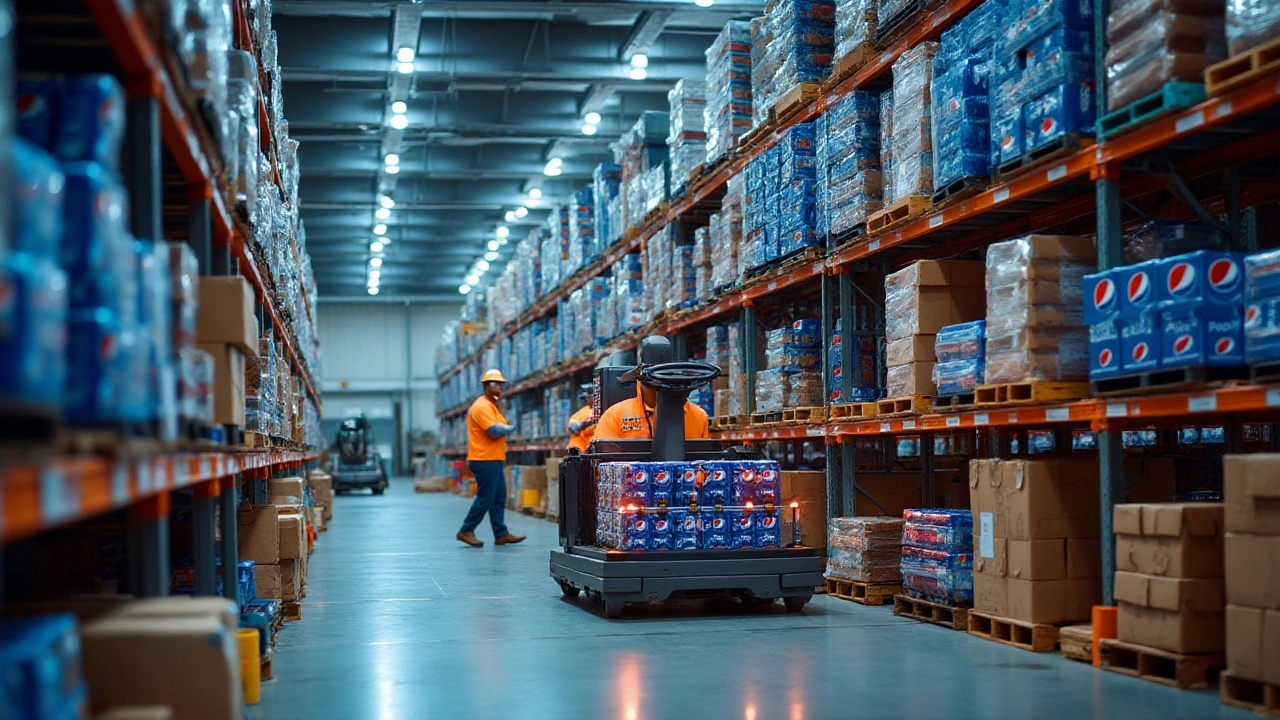PepsiCo Logistics and Delivery: What You Need to Know
If you ever wonder how a giant like PepsiCo gets its drinks from the factory to the fridge on your doorstep, you’re not alone. The answer isn’t magic – it’s a mix of smart warehousing, precise inventory control and a network of reliable carriers. Below we break down the key steps PepsiCo uses and what you can borrow for your own business.
From Factory to Shelf – The Core Supply Chain
First, PepsiCo runs its production plants on a just‑in‑time schedule. That means raw materials arrive exactly when they’re needed, cutting storage costs. Once a batch is bottled, it moves to regional distribution centers (RDCs) where temperature‑controlled storage keeps the product fresh. The RDCs are strategically placed near major markets, so trucks travel shorter distances and fuel use stays low.
After the RDCs, the goods split into two streams: retail deliveries and direct‑to‑consumer shipments. Retail routes are planned with advanced routing software that groups stores by geography, traffic patterns and delivery windows. Direct‑to‑consumer orders—think online grocery purchases—use a mix of own‑fleet vans and third‑party couriers to hit the last‑mile quickly.
Technology that Keeps the Flow Moving
PepsiCo leans heavily on Warehouse Management Systems (WMS) and Transportation Management Systems (TMS). The WMS tracks every pallet, monitors temperature, and triggers alerts if something goes off track. Meanwhile, the TMS optimizes each truck’s load, predicts ETA, and updates customers in real time. Together, these tools cut errors, lower costs and improve the overall delivery experience.
Another tech piece is data analytics. By analyzing sales spikes, weather data and regional events, PepsiCo can ramp up inventory in the right places before demand spikes. This proactive approach means shelves stay stocked and shoppers don’t face empty aisles.
So, what can you take away from PepsiCo’s setup? Start with a solid WMS that gives you real‑time visibility, use routing software to trim mileage, and let data guide your inventory forecasts. Even if you’re a small brand, scaling these practices gradually will tighten your supply chain and boost customer satisfaction.
Want to boost your own delivery game? Focus on three quick wins: (1) map your distribution points to cut travel distance, (2) adopt a simple WMS that tracks stock levels accurately, and (3) use a basic TMS or routing app to plan efficient routes. You don’t need a global network to see results—small improvements add up fast.
PepsiCo’s logistics success shows that the right mix of technology, strategic location and data‑driven decisions can move millions of cases a day without a hitch. Apply these principles, and you’ll see smoother operations, lower costs, and happier customers.
PepsiCo's Warehouse Management System Uncovered: A Deep Dive into Their Technology
PepsiCo is a global leader in the food and beverage industry, and efficient warehouse management plays a key role in their success. By utilizing advanced Warehouse Management Systems (WMS), PepsiCo ensures streamlined operations from production to delivery. This article delves into what WMS choice aids their logistics, enhancing efficiency and customer satisfaction. It also provides insights and tips on the benefits of specific WMS features.
Read More